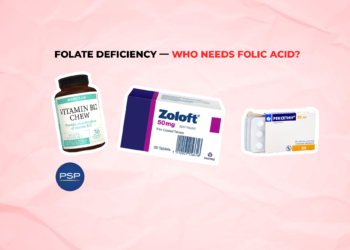There are fewer mega cities in the WHO European Region than in other areas of the world – more than 70% of people in the region live in smaller cities of less than half a million inhabitants. That gives Europe a unique opportunity to make city life healthier, says a new report prepared by the WHO European Office for the Prevention and Control of Non-Communicable Diseases, in collaboration with Gehl design agency.
The report “Urban design for health: inspiration for the use of urban design to promote physical activity and healthy diets in the WHO European Region” was launched on 31 August during the opening session of the 11th conference of HEPA Europe on health-enhancing physical activity in Nice, France.
A healthy choice should be the easiest choice
Smaller cities can use more urban design tools and health interventions to improve the well-being of their populations. The report looks at innovative and effective ways to promote physical activity and healthy diets in urban settings.
There is a strong relationship between urban environments and non-communicable diseases, which are a major cause of death and disability around the world.
Providing access to healthy foods and active lifestyles has profound effects on the physical, mental, and social well-being of communities around the world.
Rather than simply educating people about the ‘right’ food choice and benefits of physical activity, cities can implement strategies to make those choices the easiest ones, proposes the WHO report.
Tools for healthier cities
“If we want to make cities a better environment that help people live healthier lives, first we need to understand people’s needs. This will give us insights to integrate healthier habits into everyday lives effectively”, said Dr Kremlin Wickramasinghe, a.i. Head of the WHO European Office for the Prevention and Control of Non-Communicable Diseases.
“Gathering data and building connections with local communities is essential for healthier urban planning,” he adds.
The WHO report presents several innovative tools which facilitate this aim in different ways:
• Collect data on how people move around the city
• Identify local food infrastructures that can improve food security
• Estimate the economic benefits of healthier policies
• Develop tools for engaging various types of stakeholders, including citizens
• Analyze data for healthier urban planning
Real-life examples from cities
Many cities have already implemented actions related to urban transport and mobility, as well as access to urban nature and green spaces. The report highlights some of the positive examples.
Cork, Ireland: This city is introducing more playful elements into its street architecture by developing ten new parklets with entertainment equipment and seating.
Lisbon, Portugal: The city promotes healthy food behavior by putting local produce at the heart of its public space project, while teaching children how to grow vegetables and the importance of a healthy diet.
Cherepovets, the Russian Federation: Providing special pathways to access water in both summer and winter. By connecting blue and green spaces in the city center, this intervention aims to promote mental health for city dwellers of all ages and groups.
Tbilisi, Georgia: The city is transforming its streets to make them pedestrian-oriented. The new street design is meant to address the main challenges of Tbilisi: air quality, physical inactivity, and mental health.
The tools and examples in the report highlight the types of actions that policy makers and urban planners can use for inspiration to rethink and improve their cities.
GEORGIA TODAY took a closer look at what Georgia’s capital city planners have been up to to rate so highly as an example in the above mentioned WHO report.
Several events have been organized to promote public awareness of the damage caused by emissions from traffic. One was to close down the Adam Mitskevichi Street (pilot area) for a few days in order to familiarize citizens with a different perception of use of the street. From the first hours that the street was dedicated to the public, children arrived with music and started dancing, and some people enjoyed cycling and skateboarding. For the city, this was a driver for pushing the idea forward. Currently, drawings are being prepared to refurbish the street.
GEORGIA TODAY spoke to Giorgi Maisuradze, Head of the International Relations and Projects Department at the LEPL Transport and Urban Development Agency. He, at the invitation of WHO, with his colleagues, participated in a symposium which put the health and wellbeing of citizens as its utmost priority.
“In order to achieve the milestone, a long list of reforms is needed to be defined and put in place,” he tells us. “We, architects, urban planners and transport planners, acknowledge the importance of suitable solutions in those sectors that guarantee quality of life, and are therefore working together with our counterparts to achieve this sustainable development goal.”

Putting “the health and well-being of people at the center of planning and designing cities” was the focus of the initiative. What “failings” do you note in the planning of Tbilisi that could be addressed by this project?
Tbilisi has grown very quickly over the last decades. The urban sprawl has extended vastly, forcing people to commute long distances to daily services in the healthcare and education systems, and to their jobs. This puts the municipality under huge pressure to ensure basic communications are in place and that there is the public transport needed.
The city faces other challenges too that need to be addressed. We have gaps in our sectorial strategies that needs to be filled. Until now, Tbilisi did not have a sustainable vision for its public transport system.
Currently, we are working for the first ever SUMP (Sustainable Urban Mobility Plan) for the city, which will guide the city toward a sustainable future with a concrete and detailed action plan. It will offer recommendations for legal and institutional programs, and provide sustainable solutions for better public transport service and a citywide transport model.
What analytical tools are being used to assess the situation in Tbilisi?
Our in-house analytical department provides us with various data to help us analyze the current situation in Tbilisi. Our donor organizations also contribute to gathering information from different sources with various methodologies. Currently, we are closely monitoring public transport speeds throughout the city, passenger numbers in each public transport unit, and car traffic through CCTV cameras. We are also in the process of updating the Household Survey, which was last conducted in 2016.
How did the workshop organized within the WHO project help with your strategic planning for Tbilisi?
The workshop was a demonstration of the urgent need and motivation to do more to achieve our sustainable development goals, be it in architecture, urban planning or urban mobility. It was also a great opportunity to exchange knowledge and experience with our counterparts and other sectorial specialists to create a success story.
Which European cities inspire you and influence Tbilisi’s future planning?
In contrast to typical European cities, Tbilisi is developed in a linear trajectory from north-west to south-east. That creates all kinds of problems for urban mobility and access to recreation and daily services, but it does also give a possibility for citizens, as they can have direct communication with the river along the full urban stretch. In every single plan, we take this specificity into account to deliver the best possible results.
What impact do you expect from the Adam Mitskevichi Street redesign?
We believe that rethinking Mitskevichi Street as a space for people and not for cars will underline the importance of the need to have a place for social interaction, where people meet and talk or just spend time. Public spaces are crucial for bringing communities back together. Not only are the social and economic aspects important here, but such decisions decrease the air pollution and vibration caused by heavy traffic, creating new chances for alternative means of transport, especially active mobility (cycling, walking, etc). We are putting a great effort into establishing continuity within our cycling infrastructure, and, of course, Mitskevichi Street will have a role in that.
***
The Healthier Tbilisi Project
WHERE: Adam Mitskevichi Street
WHO: Multi-generational group
OBJECTIVE(S): To change streets into pedestrian areas and to design streets according to three main challenges to health in Tbilisi: air quality, physical inactivity and mental health.
MAIN ISSUES IDENTIFIED:
• The transport system is not pedestrian-friendly and lacks buses and cycling infrastructure. Tbilisi is car-dependent, resulting in traffic congestion and air pollution.
• Pedestrian areas are considered possible only in tourist areas and are therefore not found in resident neighborhoods.
• The existing green urban facilities are insufficient.
• The quality of open public spaces should be improved, providing the city not only with a higher ratio of green coverage but also more choices for civil activity.
• There are no gender-sensitive or socially inclusive spaces.
• Access to healthy food is limited.
RECOMMENDATIONS:
• Primary streets should be identified in each neighborhood to facilitate implementation and convince the relevant political officers.
• Maximize impact at the minimum cost.
• Promote public transport by redesigning streets for buses.
• Enhance the pedestrian experience by reclaiming car-dominated spaces.
• Acquire baseline data for project implementation.
• Set up a good communication strategy, conduct a communication campaign and involve the public in planning. The public campaign should demonstrate the health indicators and drivers.
• Use data to scale up projects and ensure political will.
• Raise awareness about physical activity.
• Introduce more opportunities for social interaction.
• Promote access to healthy food products.
• Study feedback from users of existing projects and learn from previous mistakes.
• Measure and evaluate economic growth and the increase in numbers of user when streets in neighborhoods are pedestrianized.
The European Commission offers support to European cities to increase urban mobility through the European Platform on Sustainable Urban Mobility Plans. Tbilisi City has implemented strategic projects and policies for restructuring the public transport network, infrastructure and zonal parking.
By Katie Ruth Davies













